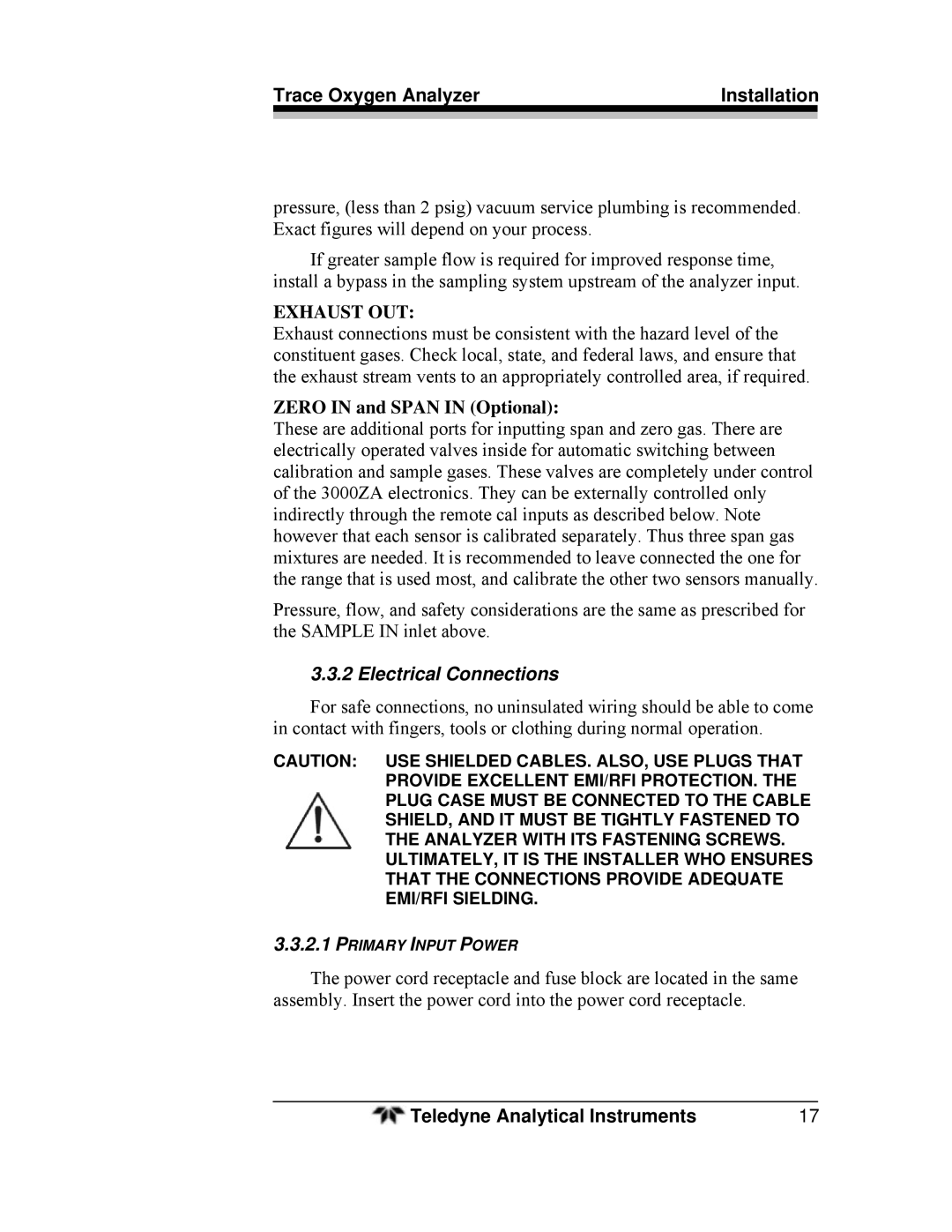
Trace Oxygen Analyzer | Installation | |
|
|
|
pressure, (less than 2 psig) vacuum service plumbing is recommended. Exact figures will depend on your process.
If greater sample flow is required for improved response time, install a bypass in the sampling system upstream of the analyzer input.
EXHAUST OUT:
Exhaust connections must be consistent with the hazard level of the constituent gases. Check local, state, and federal laws, and ensure that the exhaust stream vents to an appropriately controlled area, if required.
ZERO IN and SPAN IN (Optional):
These are additional ports for inputting span and zero gas. There are electrically operated valves inside for automatic switching between calibration and sample gases. These valves are completely under control of the 3000ZA electronics. They can be externally controlled only indirectly through the remote cal inputs as described below. Note however that each sensor is calibrated separately. Thus three span gas mixtures are needed. It is recommended to leave connected the one for the range that is used most, and calibrate the other two sensors manually.
Pressure, flow, and safety considerations are the same as prescribed for the SAMPLE IN inlet above.
3.3.2 Electrical Connections
For safe connections, no uninsulated wiring should be able to come in contact with fingers, tools or clothing during normal operation.
CAUTION: USE SHIELDED CABLES. ALSO, USE PLUGS THAT PROVIDE EXCELLENT EMI/RFI PROTECTION. THE PLUG CASE MUST BE CONNECTED TO THE CABLE SHIELD, AND IT MUST BE TIGHTLY FASTENED TO THE ANALYZER WITH ITS FASTENING SCREWS. ULTIMATELY, IT IS THE INSTALLER WHO ENSURES THAT THE CONNECTIONS PROVIDE ADEQUATE EMI/RFI SIELDING.
3.3.2.1PRIMARY INPUT POWER
The power cord receptacle and fuse block are located in the same assembly. Insert the power cord into the power cord receptacle.
|
|
|
Teledyne Analytical Instruments | 17 | |
